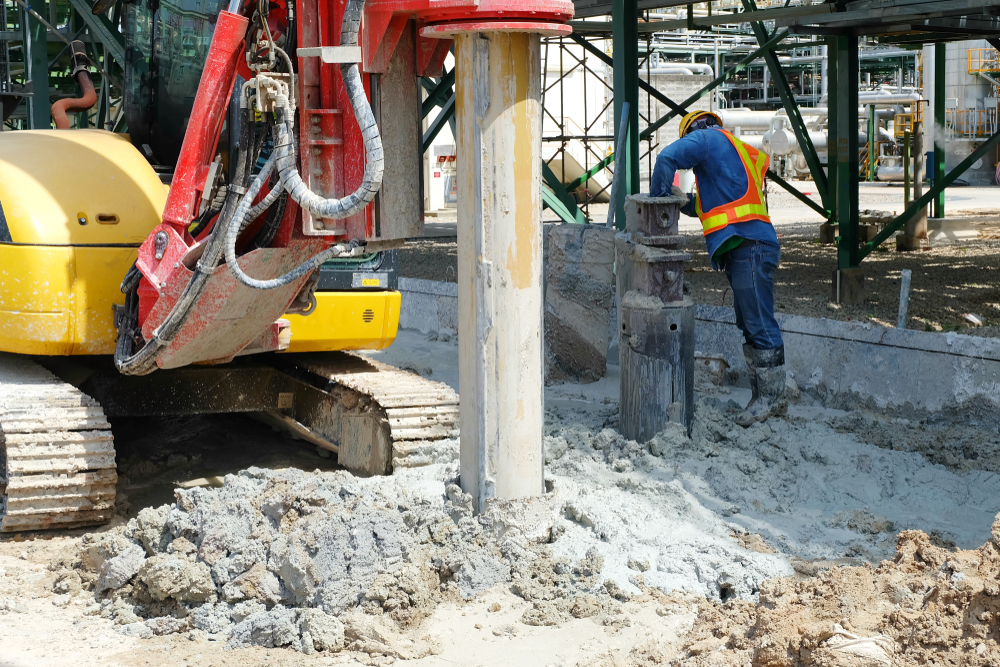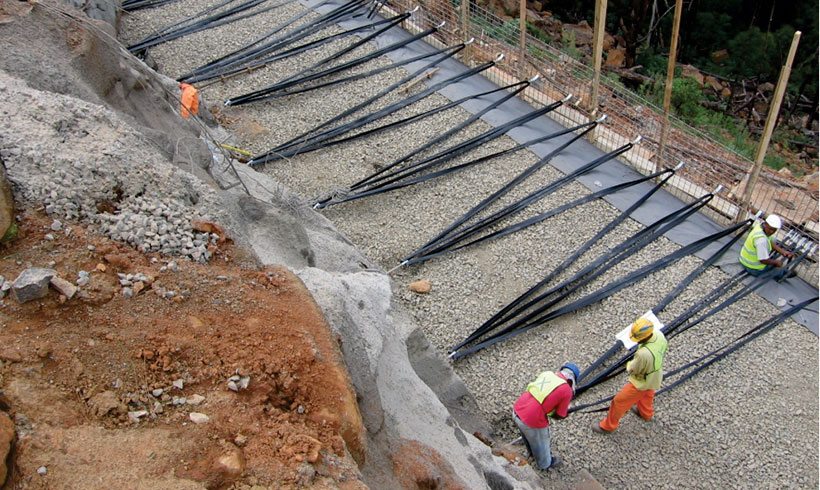4 Simple Techniques For Geotechnical Engineering For Construction Projects
7 Simple Techniques For Geotechnical Engineering For Construction Projects
Table of Contents5 Simple Techniques For Geotechnical Engineering For Construction ProjectsThe Single Strategy To Use For Geotechnical Engineering For Construction ProjectsThe Only Guide for Geotechnical Engineering For Construction ProjectsA Biased View of Geotechnical Engineering For Construction ProjectsGeotechnical Engineering For Construction Projects Things To Know Before You BuyAll about Geotechnical Engineering For Construction Projects
The role of geotechnical engineering dramatically handles understanding the functions of dirt and rock, which may differ dramatically by their density, wetness web content etc. These features need to be analyzed by geotechnical engineers to forecast their activities under numerous situations. The security as well as security of structures are influenced by soil conditions, making this evaluation necessary.A geotechnical engineer will certainly take a look at soil to determine the bearing ability of the planet and recommend correct structure types, such as shallow structures, deep foundations like piles, or specialized services like drifting structures for soft soils. Recognizing the functions and activities of soil and rock, in enhancement to exactly how they connect with building and constructions that have been erected on or within them, is just one of the primary descriptions for why geotechnical design is very important.
Environmental protection is achieved through geotechnical engineering. Know-how in air, water, and soil high quality maintenance is placed to utilize by geotechnical designers to minimize the adverse effects of tasks.
Framework growth, offshore design, tunnel construction, and deep structures. Risk-based style and multidisciplinary teams. These parts will keep the area progressing and ensure its ongoing significance in the years to come. To summarize, geotechnical design is an important technique that maintains the resilience and integrity of civil framework. Geotechnical engineers add to making structure tasks reliable throughout the globe by comprehending the practices of planet materials and applying ideal planning approaches.
What Does Geotechnical Engineering For Construction Projects Mean?
By examining dirt, rock, and subsurface conditions, geotechnical designers give essential insights that assist in the style, building and construction, and upkeep of structures and framework.

How Geotechnical Engineering For Construction Projects can Save You Time, Stress, and Money.
Research laboratory testing: Identifying the homes of dirt and rock. Field screening: Performing examinations on-site to analyze conditions. Analysis and style: Utilizing information to make structures, preserving wall surfaces, passages, and other frameworks. Several prominent building and construction tasks have actually efficiently made use of geotechnical design to ensure their stability and safety. :: The globe's highest structure called for a deep understanding of the underlying geology.

As a leader in geotechnical engineering, BECC Inc. is dedicated to advice supplying cutting-edge and efficient remedies that satisfy the greatest requirements of high quality and safety and security., a mechanical engineer and rock hound.
Unknown Facts About Geotechnical Engineering For Construction Projects
Terzaghi likewise established the structure for concepts of birthing ability of foundations, and the theory for forecast of the rate of settlement of clay layers as a result of combination. Afterwards, Maurice Biot totally established the three-dimensional dirt combination theory, prolonging the one-dimensional model previously developed by Terzaghi to a lot more basic theories and presenting the set of fundamental formulas of Poroelasticity.
Geotechnical designers check out and identify the homes of subsurface conditions and products.
Geotechnical Engineering For Construction Projects for Dummies
Geologic mapping and analysis of geomorphology are normally completed in examination with a rock hound or design rock hound. Subsurface expedition usually entails in-situ testing (for instance, the typical infiltration test and cone infiltration examination). The excavating of test pits and trenching (especially for finding mistakes and slide aircrafts) may see this website also be utilized to discover soil conditions at deepness. Still, they are in some cases utilized to permit a geologist or engineer to be reduced right into the borehole for straight aesthetic and hands-on examination of the soil and rock stratigraphy. Various soil samplers exist to meet the needs of various engineering projects. The basic infiltration examination, which utilizes a thick-walled split spoon sampler, is the most typical means to gather disrupted examples.

Generally, the interface's exact geometry is unknown, and a simplified user interface geometry is presumed. Limited inclines require three-dimensional models to be evaluated, so most slopes are evaluated thinking that they are definitely large and can be represented by two-dimensional designs.
The smart Trick of Geotechnical Engineering For Construction Projects That Nobody is Discussing
The observational technique may be called adheres to: General expedition adequate to develop the harsh nature, pattern, and residential or commercial properties of down payments. Analysis of the most likely conditions and the most negative possible deviations. Producing the design based upon a working theory of actions anticipated under the most possible conditions. Option of quantities to be observed as construction profits and computing their anticipated values based upon the functioning hypothesis under one of the most negative problems.
Measurement of quantities and examination of actual conditions. Design adjustment per actual dig this problems The observational approach appropriates for building and construction that has actually currently started when an unanticipated growth occurs or when a failure or crash looms or has already happened. It disagrees for projects whose style can not be altered throughout building.